April 23, 2023, by Nicholas Blake
History of the James Cameron-Gifford Library, Sutton Bonington Campus.
Dr James Cameron-Gifford was a leading agriculturalist born in 1909. He first came to Nottingham in 1942 when he was appointed as Technical Officer with the Nottingham War Agricultural Committee. The object of the committee was to increase the county’s food production, and among the many tasks allotted to Cameron-Gifford was the development of a crop spraying service to farmers, primarily to control weeds in cereal crops and some diseases of potatoes.
Farming was his passion. In 1950 he rented a badly neglected farm at Clifton Pastures from the Ministry of Agriculture, turning around its fortune, which then gave him the opportunity to purchase other farms at Lamcote and Cotgrave. By 1975 he was responsible for some 600 acres of farmland on the outskirts of Nottingham.
Dr Cameron-Gifford boasted almost forty years of service to the University of Nottingham. His association began in 1945 when he was elected to the Nottingham City Council, who placed him on the University College Council, a position to which he was later appointed to in his own right. Over the next few decades he held many posts at the University, including Vice President of the Council, Chairman of the Estates and Buildings Committee, member of the Finance Committee, member of the Halls and Students Residences Committee, and Pro-Chancellor from 1974 right up until his death.
If all that wasn’t enough, Cameron-Gifford became Justice of the Peace and Chairman of the Nottingham Agricultural Show, was awarded an honorary degree of Doctor of Science in 1975, and also found time to establish the annual Cameron-Gifford Law Lecture.
Dr James Cameron-Gifford died in 1993, and the following year the University paid tribute by naming one of their libraries after him.
This is the story of that library.
* * *
The University of Nottingham’s Sutton Bonington Campus is home to students studying Biosciences and Veterinary Medicine. Nestled amongst its world-leading laboratories and specialist facilities is James Cameron-Gifford Library, providing resources and study spaces for students and researchers.
The Sutton Bonington Campus was not always part of the University of Nottingham. The site was purchased in 1913 by the Midland Dairy and Agricultural College to allow them to expand from their original location at Kingston-on-Soar. The College offered courses in theoretical and practical agriculture, dairying, horticulture and poultry, and was also the headquarters of the Board of Agriculture in the Midlands. Work on new buildings (including an administrative block, laboratories, lecture rooms and men’s hostel) commenced in 1914, though the move was delayed by the First World War, with the newly constructed buildings commandeered by the War Department for use as a Prisoners of War Officers Camp until 1919. By 1928, with the construction of a new dairy, women’s hostel and farm buildings, the full move from Kingston-on-Soar was complete.
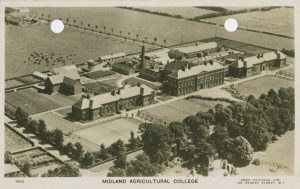
Postcard depicting the Midland Agricultural College at Sutton Bonington, photographed from the air, c.1940s. (UMP/3/9/12/1)
The new campus was advertised proudly within the College’s prospectuses: “The whole of the buildings are pleasantly situated in an elevated position facing west across the Soar Valley into the County of Leicester…” (Prospectus…, 1929.) “Perhaps the most outstanding feature is that the buildings and equipment collectively represent the most extensive and most modern in design of any in existence in this country. The site is high-lying with a gravel sub-soil, thus enabling good natural drainage. The buildings throughout are all specially well-lighted, are equipped with central heating and electric light, while an excellent water supply is provided from the Derwent Valley Water Board mains.” (Prospectus…, 1935/36.)
As well as the latest mod-cons, the College also boasted within its main building “an extensive reference library containing some three thousand technical and scientific books on agriculture, dairying, poultry husbandry and horticulture” (Prospectus…, 1942/43).
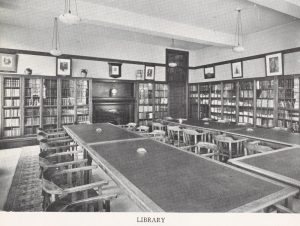
Photograph of the library at Sutton Bonington Campus, 1942, from Prospectus of courses in agriculture, dairying, poultry keeping, horticulture / Midland Agricultural College, 1942/43. (University of Nottingham Collection Periodicals Not 5.C4.1.M4)
In the late 1940s the Midland Agricultural and Dairy College became the Faculty of Agriculture for the University of Nottingham. Over the next few decades the number of students studying on the campus expanded, meaning the library was expected to provide more and more books and study space.
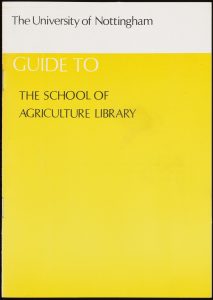
Cover of booklet Guide to the School of Agriculture Library, 1977. (University of Nottingham Collection Periodicals Not 5.J35.36.J2)
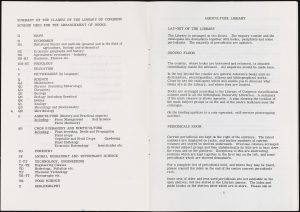
Pages from the booklet Guide to the School of Agriculture Library detailing available resources, 1977. (University of Nottingham Collection Periodicals Not 5.J35.36.J2)
By the early 1980s the relatively small library was under immense pressure, with many books having to be stored in the old refectory. As the existing setup was considered “grossly overcrowded and […] inadequate”, the need for a brand new Agricultural Science Library was made, with an appeal for funding promoted during the University’s centenary in 1981. The appeal hoped to raise £550,00 for a new building, originally imagined as a separate, rectangular structure located in the central area on the campus. (Centenary appeal, 1881-1981 : supplementary brochures, 1981.)
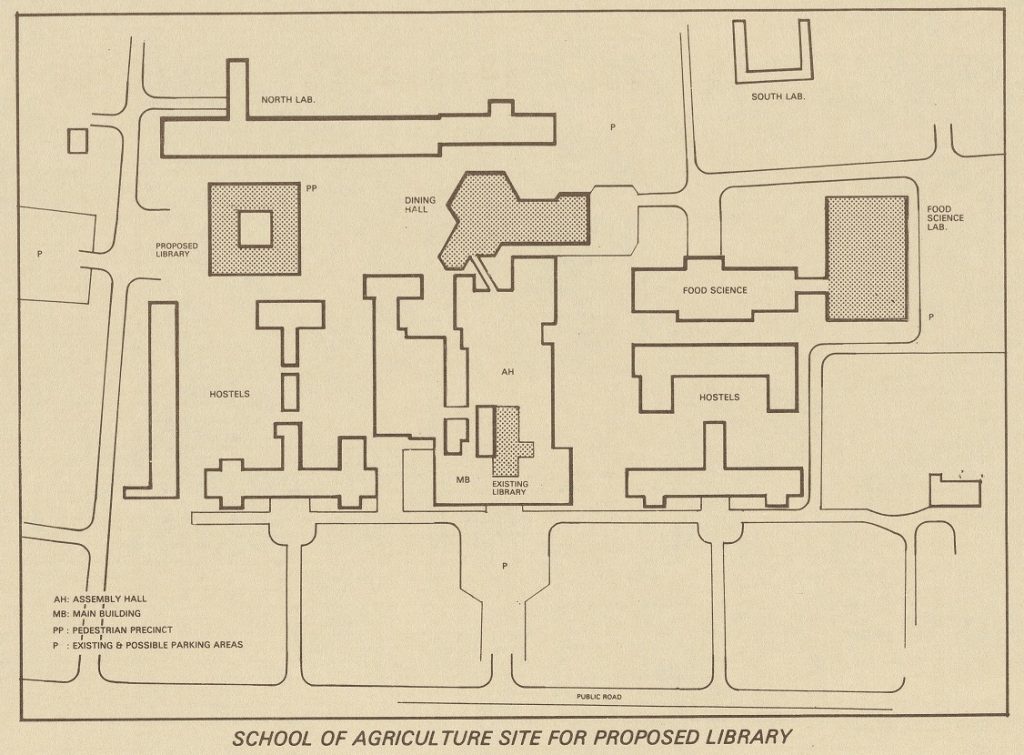
Plan of Sutton Bonington Campus showing the proposed location for a new library as a separate building. From: The University of Nottingham centenary appeal, 1881-1981 : supplementary brochures. (UoNC Pamphlet Not 5.E6.F81 SC797144)
£386,000 was ultimately raised from the University Grants Committee, the University itself, and the Frank Parkinson Agricultural Trust to build an extension on the site of the old refectory (Tentacles, Winter 1985). The extension, with its distinctive Lyon’s Cup Cake-esque pleated circular shape, was designed by John Saunders.
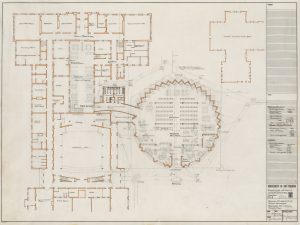
Architect’s plan of the proposed extension to the Sutton Bonington Campus library, 1981. (UFE/2/5 Roll 19)
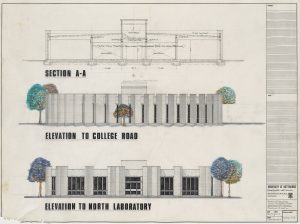
Architectural elevations showing the sides of the proposed extension to the Sutton Bonington Campus library, 1981. (UFE/2/5 Roll 19)
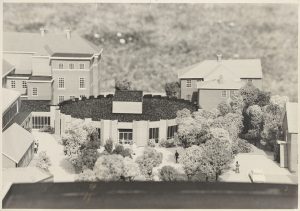
Photograph of the architect’s model of the extension to the Sutton Bonington Campus library, 1983. (ACC 3140 Box 2).
Construction began in Spring 1983 (Tolley, p.426), with the existing library space also being completely refurbished.
The extension doubled the available space for books, which could be kept on open shelves again rather than hidden away in a makeshift storage. Student study spaces now totalled over 100, including 18 open carrels around the outer wall. The new library boasted a seminar room, computer facilities, and display areas.
Library staff at the time were excited by the extension, albeit somewhat dubious about the aesthetics of this strange new building. In the Spring 1984 issue of staff magazine Tentacles they wrote, “The Library extension has been completed. The roof was painted with a shining silver reflective paint which must be visible from alien satellites. The space age style is also reflected inside the building and many visitors have remarked on the similarity to the Tardis. All the staff are awaiting wonderful changes in their lives once we occupy the new Library. SWALCAP and time travels on-line will become available in the year of ‘newspeak’!”. (SWALCAP, incidentally, was the South West Academic Libraries Co-operative Automation Project, a computer based circulation and cataloguing system about to be adopted by the University.)
The new Agricultural Science Library was officially opened on Wednesday 10th October 1984 by Lord Selbourne, Chairman of the Agricultural and Food Research Council, and attracted a large gathering, as well as being reported in The Times and the Loughborough Echo.
In 1994 the library was renamed to The James Cameron-Gifford Library of Agricultural and Food Sciences. The library’s new name was a tribute to Dr James Cameron-Gifford, the leading local agriculturalist, who had died the previous year after serving the University for almost forty years.
The library’s renaming ceremony was attended by his widow, Mary Cameron-Gifford, who unveiled a commemorative plaque, while University Pro-Chancellor Dr Roger Godfrey gave an address.
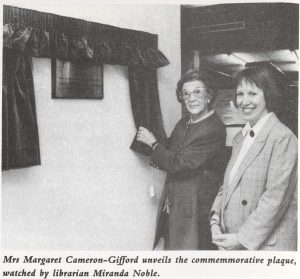
Photograph of the naming ceremony of James Cameron-Gifford Library at Sutton Bonington. From University of Nottingham newsletter, February 25 1994, p.4 (UAD 13/2/1/5/1)
In 2008, James Cameron-Gifford Library underwent a major refurbishment, which included the development of Centre for Integrative Learning (CIL) facilities in The Learning Hub. The refurbishment was funded by the Higher Education Funding Council for England under the Centres for Excellence in Teaching and Learning (CETL) initiative (Agrimag 1911-2011, p.14).
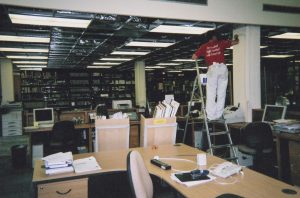
Photograph showing refurbishment underway at the James Cameron-Gifford Library, Sutton Bonington Campus, c.2008. (ACC 3140/380)
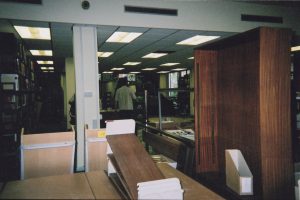
Photograph showing refurbishment underway at the James Cameron-Gifford Library, Sutton Bonington Campus, c.2008. (ACC 3140/363)
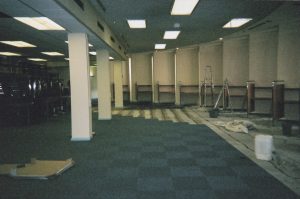
Photograph showing refurbishment underway at the James Cameron-Gifford Library, Sutton Bonington Campus, c.2008. (ACC 3140/360)
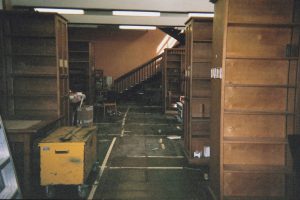
Photograph showing refurbishment underway at the James Cameron-Gifford Library, Sutton Bonington Campus, c.2008. (ACC 3140/358)
The library was shown off by Veterinary Medicine student Charli in this tour video, filmed in Autumn 2022.
Today, the James Cameron-Gifford Library serves students of the School of Veterinary Medicine and Science, as well as the School of Biosciences, and is one of the major hubs of a vibrant, close-knit campus.
At the time of writing the library is undergoing further renovations to improve lighting, furniture and shelving units, add extra teaching spaces and silent study areas, create better accessibility, and to install a kitchenette.
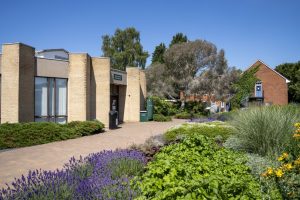
Photograph of James Cameron-Gifford Library during lockdown, July 2020. (University of Nottingham Image Bank.)
The material featured in this blog post – plus much, much more! – is available to view at Manuscripts and Special Collections, King’s Meadow Campus. Please email mss-library@nottingham.ac.uk for more information or to arrange a visit.
Resources used:
- Article about James Cameron-Gifford receiving an honorary degree: University of Nottingham gazette no.86, 1975, pp.2072-3 (University of Nottingham Collection Periodicals Not 5.L2 GAZ)
- James Cameron-Gifford obituary: University of Nottingham gazette Autumn 1993, p.30 (University of Nottingham Collection Periodicals Not 5.L2 GAZ)
- “Library naming honours leading agriculturalist”: University of Nottingham newsletter February 25 1994, p.4 (UAD 13/2/1/5/1)
- File of papers relating to naming of James Cameron-Gifford Library (UAC/5/12/1-5)
- The history of the University of Nottingham / B.H. Tolley. (East Midlands Collection Not 5.E2 TOL)
- Prospectus of courses in agriculture, dairying, poultry keeping, horticulture / Midland Agricultural College. (University of Nottingham Collection Periodicals Not 5.C4.1.M4)
- Photographs and display materials relating to Midlands Agricultural College from James Cameron-Gifford Library at Sutton Bonington (ACC 3140)
- Agrimag 1911-2011 : a centenary celebration (University of Nottingham Collection os.Pamph Not 5.J4.2 AGR 1006641000)
- School of Agriculture, Sutton Bonington – Plans and architectural papers (UFE/2/5 Roll 19)
- The University of Nottingham centenary appeal, 1881-1981 : supplementary brochures. (University of Nottingham Collection Pamphlet Not 5.E6.F81 SC797144)
- Tentacles (University of Nottingham Collection Periodicals Not 5.J35.55)
- Guide to the School of Agriculture Library (University of Nottingham Collection Periodicals Not 5.J35.36.J2)
- Hallward library designs and University of Nottingham campus photographs, 1965-1997 (ACC 3117)
- Postcard depicting the Midland Agricultural College at Sutton Bonington, photographed from the air, c.1940s. (UMP/3/9/12/1)
With thanks to Hannah Southern for additional research.
Edited 09/05/2023 to update a broken link.
No comments yet, fill out a comment to be the first

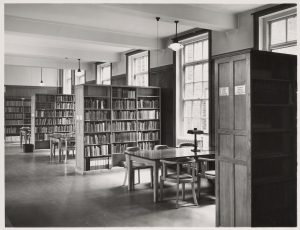
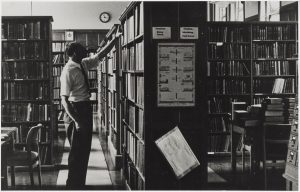
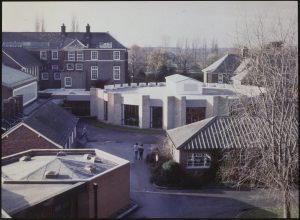
Leave a Reply